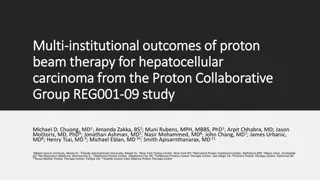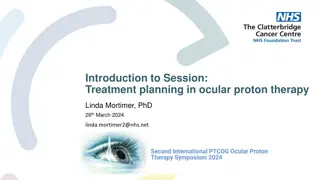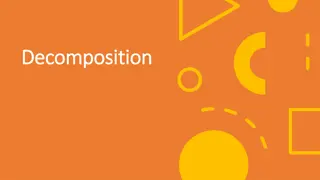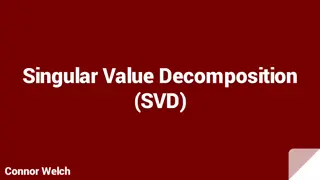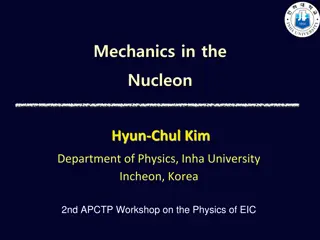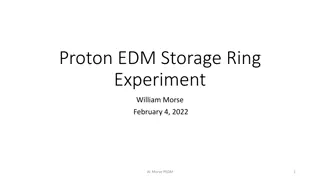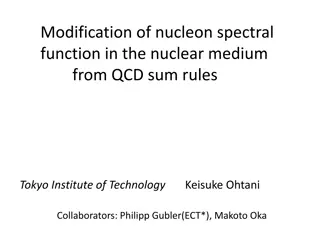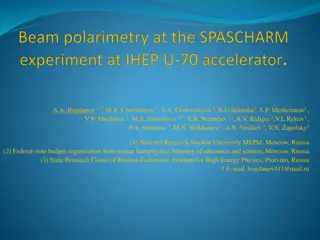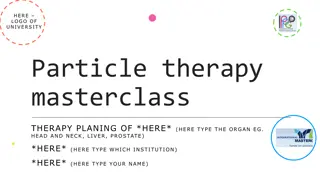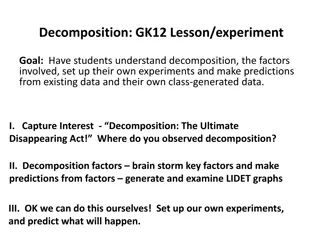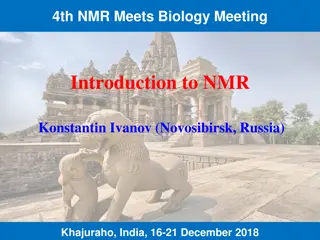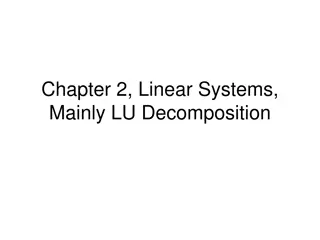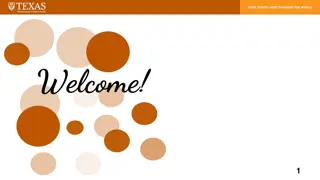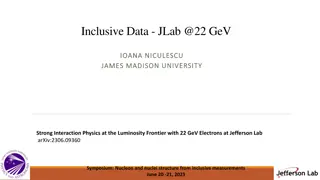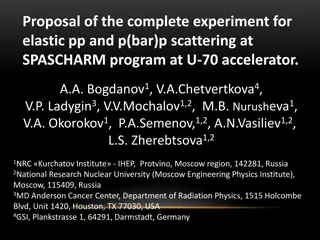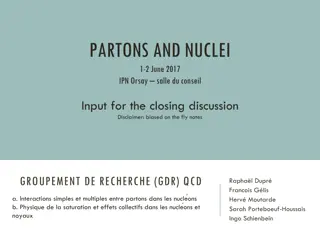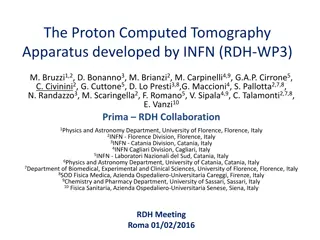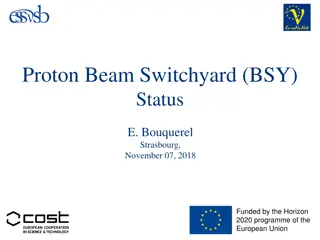Understanding Nucleon Spin Decomposition and Proton Spin Problem
Explore the complex realm of nucleon spin decomposition and the enigmatic proton spin problem, delving into concepts like orbital angular momentum, quarks and gluons' helicity, and longitudinal double spin asymmetry in polarized deep inelastic scattering. Learn about the spin crisis, gluon polarization, QCD angular momentum tensor, Jaffe-Manohar and Ji decompositions, generalized parton distributions, and lattice tests of spin sum rule.
Download Presentation

Please find below an Image/Link to download the presentation.
The content on the website is provided AS IS for your information and personal use only. It may not be sold, licensed, or shared on other websites without obtaining consent from the author. Download presentation by click this link. If you encounter any issues during the download, it is possible that the publisher has removed the file from their server.
E N D
Presentation Transcript
Nucleon spin decomposition Yoshitaka Hatta (Yukawa institute, Kyoto U.)
The proton spin problem The proton has spin . The proton is not an elementary particle. Orbital angular Momentum (OAM) Quarks helicity Gluons helicity In the quark model, with relativistic effects,
from polarized DIS Longitudinal double spin asymmetry in polarized DIS p X
`Spin crisis In 1987, EMC (European Muon Collaboration) announced a very small value of the quark helicity contribution !? Recent value from NLO QCD global analysis
Gluon polarization Result from the NLO global analysis after the RHIC 200 GeV pp data DeFlorian, Sassot, Stratmann, Vogelsang (2014) Note that the uncertainty from the small-x region is huge!
QCD angular momentum tensor QCD Lagrangian Lorentz invariant Noether current QCD angular momentum tensor quark helicity gluon helicity canonical energy momentum tensor Quark OAM Gluon OAM
Jaffe-Manohar decomposition (1990) Based on the canonical energy momentum tensor Operators NOT gauge invariant. Partonic interpretation in the light-cone gauge
Ji decomposition (1997) Improved (Belinfante) energy momentum tensor One can add a total derivative. Further decomposition in the quark part (but not in the gluon part)
Generalized parton distributions (GPD) Non-forward proton matrix element Twist-two GPDs, accessible in Deeply Virtual Compton Scattering (DVCS)
Lattice test of spin sum rule Alexandrou et al. (2013) Deka et al. (2015) `Disconnected insertions included
Two spin communities divided measured by PHENIX, STAR, COMPASS, HERMES Nonexistent in Ji s scheme Jaffe-Manohar common and well-known not measured yet not even well-defined? Ji Define rigorously. Must be related to GPD! accessible from GPD measured at JLab, COMPASS, HERMES, J-PARC also calculable in lattice QCD
Complete decomposition Chen, Lu, Sun, Wang, Goldman (2008) Wakamatsu (2010) Y.H. (2011) where (my choice) Gauge invariant completion of Jaffe-Manohar
OAM from the Wigner distribution Wigner distribution in QCD Belitsky, Ji, Yuan (2003) Need a Wilson line ! Define Lorce, Pasquini (2011) Which OAM is this??
Canonical OAM from the light-cone Wilson line YH (2011) Ji s OAM from the straight Wilson line Ji, Xiong, Yuan (2012) `Potential OAM Torque acting on a quark Burkardt (2012)
vs. on a lattice Engelhardt, talk at POETIC VI (2015) Ji Jaffe-Manohar staple length
Density of OAM Understand this relation at the density level ??
Deconstructing OAM Ji s OAM canonical OAM `potential OAM ``F-type For a 3-body operator, it is natural to define the double density. ``D-type
The D-type and F-type correlators are related. Eguchi, Koike, Tanaka (2006) doubly-unintegrate Canonical OAM density The gluon has zero energy partonic interpretation! YH. Yoshida (2012)
Relation to twist-three GPD YH. Yoshida (2012) twist-2 twist-3 Penttinen, Polyakov, Shuvaev, Strikman (2000) integrate
Quark canonical OAM density Wandzura-Wilczek part genuine twist-three First moment: The bridge between JM and Ji
Gluon canonical OAM density twist-three gluon GPD WW part genuine twist-three first moment:
Transverse spin decomposition Use the Pauli-Lubanski vector instead of the angular momentum tensor . Ji (1996) Ji, Xiong, Yuan (2012) YH, Tanaka, Yoshida (2012) Leader (2012) Frame dependent!
Complete transverse spin decomposition? YH, Tanaka, Yoshida (2012) Longitudinal Transverse same! cannot be separated in a frame-independent way
Computing on a lattice? Consider the usual quark distribution function Nonlocal operator along the light-cone Real-time problem Becomes local after taking the x-moment. nonlocal even though it is a moment. Local only in the light-cone gauge.
Compute the nave gluon helicity in some gauge gauge dependent, frame dependent. Boost it to large momentum and do the matching Ji, Zhang, Zhao (2013) The limits and do not commute Not all gauges are allowed. The allowed gauges form a universality class. YH, Ji, Zhao (2013) Preliminary lattice study by xQCD collaboration Even the parton densities (PDF, , etc.) can be directly calculable? Ji (2013)
Conclusions Complete gauge invariant decomposition of nucleon spin now available in QCD, even at the density level Relation between Jaffe-Manohar vs Ji fully understood in terms of twist and GPD. Can we measure in experiment? Hint: Wigner distribution measurable YH, Xiao, Yuan (2016)



